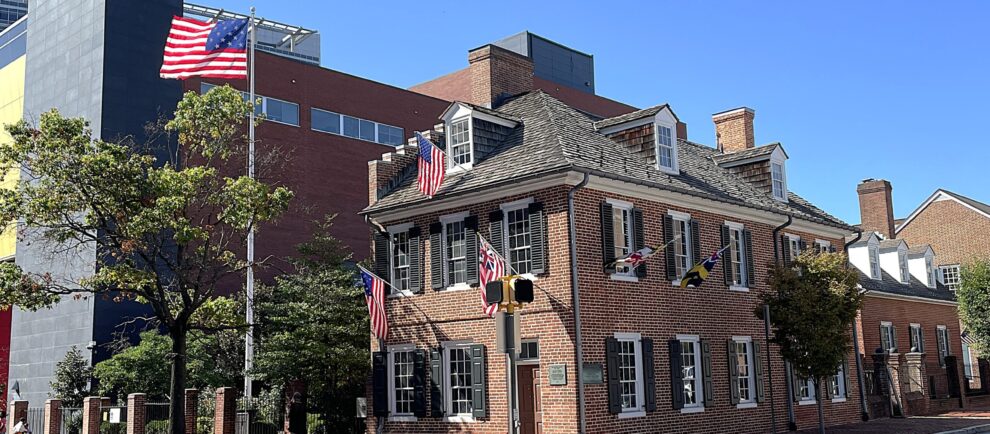March 3, is #NationalAnthemDay. Although Francis Scott Key’s famous poem was popular in Baltimore almost immediately following the Battle of Baltimore in 1814, it wasn’t until 1931 that it was adopted as the national anthem of the United States. Read on for a brief history of the “The Star-Spangled Banner.”
On September 13, 1814, British ships anchored a mile from Fort McHenry in support of soldiers advancing toward Baltimore from North Point. The 25-hour bombardment was unsuccessful and on the dawn of September 14, Francis Scott Key who had remained in British custody after negotiating the release of prisoner of war was poised to witness the Star-Spangled Banner flag being hoisted over the fort. Key finished his poem in a hotel after sailing into Baltimore after the battle. The poem, first titled “The Defense of Fort McHenry,” and later “The Star-Spangled Banner” is printed as a broadside and in newspapers, gaining quick popularity.
Shortly after the battle in 1814, Thomas Carr, a Baltimore music publisher, prints the first sheet music of “The Star-Spangled Banner” and offers it for sale at his story on Baltimore Street. Following a play at the Holliday Street Theatre on October 19, 1814, the first public performance of “The Star-Spangled Banner” is made by an actor named Mr. Harding.
During the Civil War, 1861-1865, “The Star-Spangled Banner” is performed with greater frequency during the Civil War coinciding with increased civilian use of the national flag, whose stars symbolizing the states of the Union make a powerful allusion to the cause of reuniting the country.
In 1904, Italian composer Giacomo Puccini incorporates “The Star-Spangled Banner” as a musical theme in his opera Madam Butterfly to introduce the central character of U.S. naval officer Lieutenant Pinkerton.
Eight years later in 1912, the first bill seeking to make “The Star-Spangled Banner” the national anthem is submitted to Congress, but it dies in committee. In 1916, President Woodrow Wilson signs an executive order that “The Star-Spangled Banner” is to be played at official occasions.
It is not until 1931, that a bill making the Star-Spangled Banner the national anthem of the United States of America is adopted by both houses of Congress and is signed into law on March 3rd.
Edward Percy Moran (1862-1935), American
By Dawn’s Early Light, 1912
Oil on canvas
MU1995LOANBCL
Star-Spangled Banner Flag House Baltimore City Life Museum Collection

